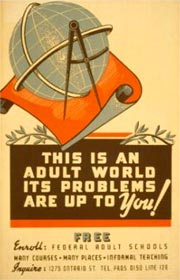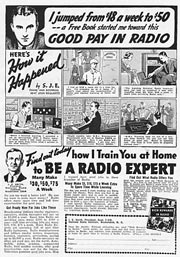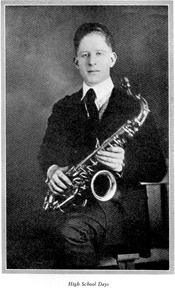 As the Pitch Perfect series continues, today we feature a 1949 collection of advertising slogans used to market schools and institutes.
As the Pitch Perfect series continues, today we feature a 1949 collection of advertising slogans used to market schools and institutes.
America’s foremost school of commercial art (Federal Schools).
Better things for better living through chemistry (Institutional Advertising).
Better vision for better living (Better Vision Institute).
Be wise, protect your future (Cal-Aero Technical Institute), Glendale.
Broadcasts as she bakes (Radio Cooking School of America).
Business leaders of today are the I. C. S. School students of yesterday, The (International Correspondence Schools), Scranton, Pa.
Business leaders of tomorrow are the I. C. S. students of today, The.
Country day school for boys, A (University School), Cleveland.
Earn while you learn (I. C. S.).
Executive training for business leadership (Woodbury College), Los Angeles.
First step to first job (Wood School).
For a better tomorrow for everybody.
 For hair growth (Saburo Institute, Inc.).
For hair growth (Saburo Institute, Inc.).
Go to high school in bedroom slippers (I. C. S.).
Help the blind to help themselves (Industrial Home for the Blind).
House of smartness, The (correspondence course), Alma Archer.
Industrial headquarters of the south (Atlanta Industrial Bureau).
Industry, concentration, self-reliance (I. C. S.).
Justice for genius (Ascap).
Keeps clothes clean longer (Miraclean Institute of U. S. and Canada).
Knowledge we put in your head guides the skill we put in your hands, The (Michigan State Automobile School).
Make the best better (4-H Club).
Meet yourself and opportunity (Career Testing), Broad Brook, Conn.
Men finders (Interstate Employment System).
Read More »

